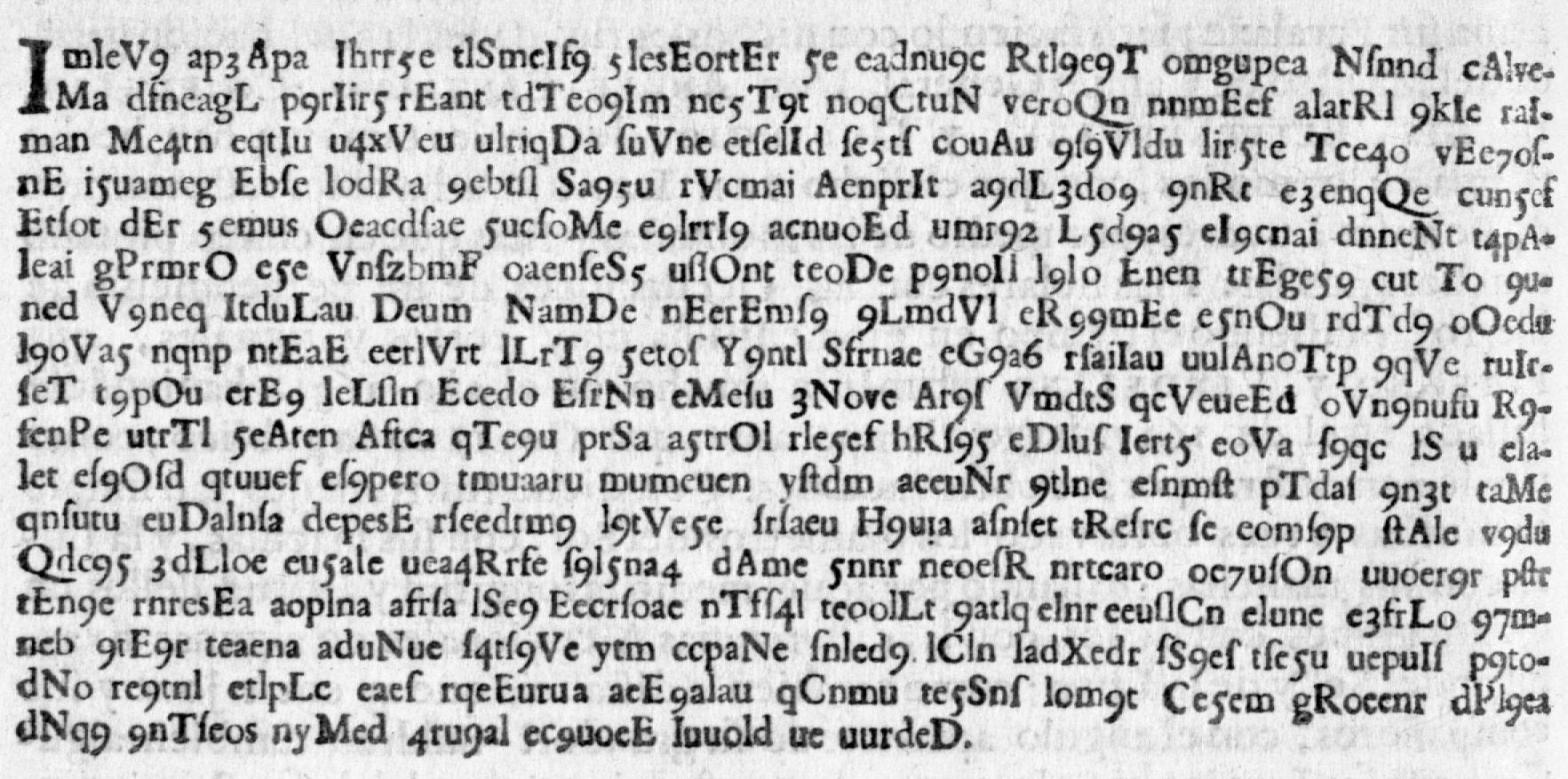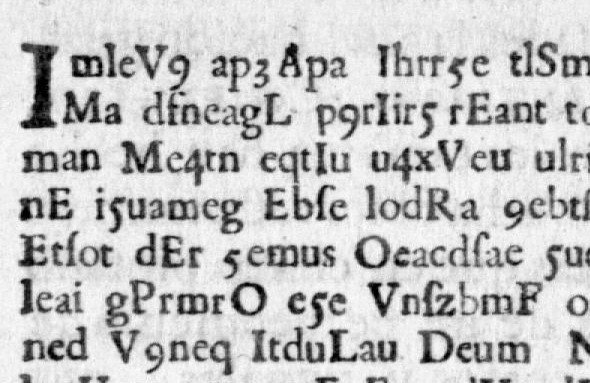Belgian scholar Michael Florent van Langren (1598-1675) proposed a naval navigation method that didn’t work. A second method he developed might be described a cryptogram that has never been solved.
In October 2015, I blogged about Belgian scholar Michael Florent van Langren (1598-1675), also known as Langrenus. Van Langren’s claim to fame is a method by which the crew of a ship at sea could determine the longitude of their current position. Whoever has read the book Longitude by Dava Sobel knows how important this issue once was. While it was quite easy to find out the latitude (based on the position of the sun), it used to be impossible to determine the longitude accurately. This often led to disastrous navigation errors.
A non-working method
For this reason, scholars in the seafaring nations for centuries desperately searched for a suitable longitude determination method. Governments raised high rewards for solving this problem. It was not until the middle of the 18th century that a practicable method was finally developed. It required a clock accurate to the second, as it was first possible to build at that time.
Van Langren published his proposal for the determination of longitude in 1644. It was based on a precise observation of the lunar surface. The details are described in a paper by Michael Friendly, Pedro Valero-Mora and Joaquíin Ibáñez Ulargui. The following diagram played a role in van Langren’s method:

Source: Friendly, Valero-Mora, and Ibáñez Ulargui
Toledo, Spain, was the place the prime meridian went through in the geographic coordinate system used at the time. The other points marked on the horizontal axis refer to locations on the moon.
If van Langren’s method had worked, he would have gone down in history. However, it proved impracticable, and so it only enriched the long list of longitude failures.
The Langrenus cryptogram
According to the aforementioned paper, van Langren later developed a second method for determining the longitude. He informed the Spanish royal court about it in an encrypted letter (I call it “Langrenus cryptogram”). This letter has survived, but the cleartext is unknown.

Source: Friendly, Valero-Mora, and Ibáñez Ulargui
Here is a transcription of the Langrenus cryptogram (also provided by Friendly, Valero-Mora, and Ibáñez Ulargui):
ImIeV9 ap3Apa Ihrr5e tlSmeIf9 5lesEortEr 5e eadnu9c Rtl9e9T omgupea Nſnnd cAlveMa dfneagL p9rIir5 rEant tdTeo9Im nc5T9t noqCtuN veroQn nnmEef alarRl 9kIe raIman Me4tn eqtIu u4xV eu ulriqDa ſuVne etſelId ſe5tſ couAu 9ſ9Vldu lir5te Tce4o vEe7oſnE i5uameg Ebſe lodRa 9ebtſl Sa95u rVcmai AenprIt a9dL3do9 9nRt e3enqQe cun5ef Etſot dEr 5emus Oeacdſae 5ucſoMe e9lrrI9 acnuoEd umr92 L5d9a5 eI9cnai dnneNt t4pAIeai gPrmrO e5e VnſzbmF oaenſeS5 uſlOnt teoDe p9noIl l9lo Enen trEge59 cut To 9uned V9neq ItduLau Deum NamDe nEerEmſ9 9LmdVl eR99mEe e5nOu rdTd9 oOedu I9oVa5 nqnp ntEaE eerlVrt lLrT9 5etoſ Y9ntl Sfrnae eG9a6 rſaiIau uulAnoTtp 9qVe ruIcſeT t9pOu erE9 leLſln Ecedo EſrNn eMeſu 3Nove Ar9ſ VmdtS qcVeueEd oVn9nufu R9fenPe utrTl 5eAten Aftca qTe9u prSa a5trOl rle5ef hRſ95 eDluſ Iert5 eoVa ſ9qc lS u elalet eſ9Oſd qtuuef eſ9pero tmuaaru mumeuen yſtdm aeeuNr 9tlne eſnmſt pTdaſ 9n3t taMe qnſutu euDalnſa depesE rſeedtm9 l9tVe5e ſrſaeu H9uia aſnſet tReſrc ſe eomſ9p ſtAle v9du Qdc95 3dLloe eu5ale uea4Rrfe ſ9l5na4 dAme 5nnr neoeſR nrtcaro oe7uſOn uuoer9r pſtc tEn9e rnresEa aoplna afrſa lSe9 Eecrſoae nTfſ4l teoolLt 9atlq elnr eeuſlCn elune e3frLo 97mneb 9tE9r teaena aduNue ſ4tſ9Ve ytm ccpaNe ſnled9 lCln ladXedr ſS9eſ tſe5u uepuIſ p9todNo re9tnl etlpLe eaeſ rqeEurua aeE9alau qCnmu te5Snſ lom9t Ce5em gRoeenr dPl9ea dNq9 9nTſeos nyMed 4ru9al ec9uoeE Inuold ue uurdeD.
After my first blog post in 2015, my readers published a number of interesting comments. A reader named Schorsch posted some interesting background information about van Langren and his work on the longitude problem.
However, nobody came up with an idea on how the Langrenus cryptogram could be broken. The frequency analysis (created with Christian Baumann’s Multi-Dec) …

… is consistent with the Dutch language. So, we might be dealing with a transposition cipher. However, it is far from clear what the numbers and the capital letter mean. Was an additional encryption step applied?
Can a reader find out more? After over 350 years, it’s time to solve this mystery.
Follow @KlausSchmeh
Further reading: Tony Gaffney’s starlight steganogram
Linkedin: https://www.linkedin.com/groups/13501820
Facebook: https://www.facebook.com/groups/763282653806483/



Kommentare (5)